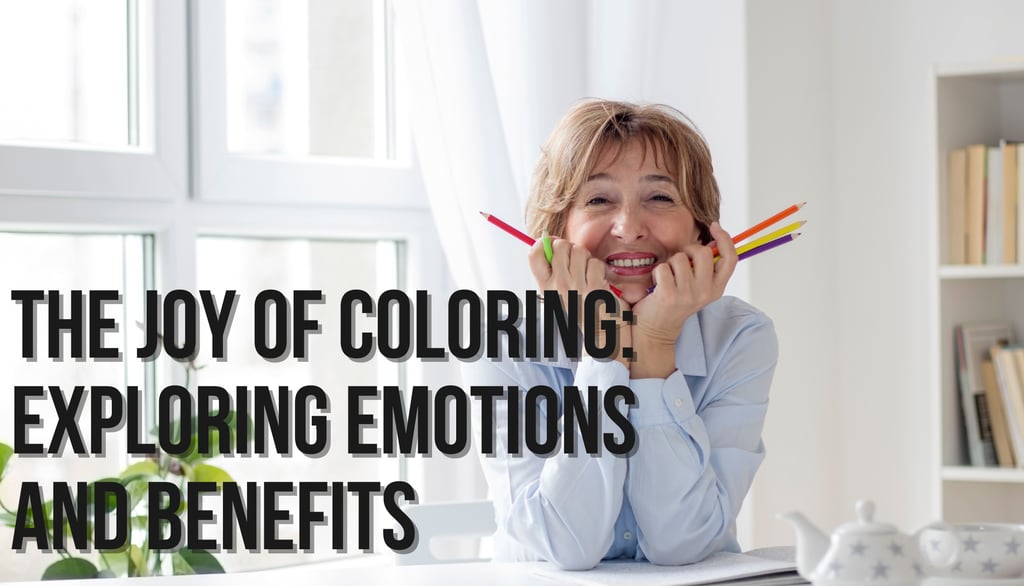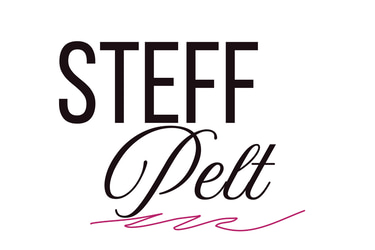Welcome to steff pelt!
The Joy of Coloring: Exploring Emotions and Benefits
Coloring isn't just an activity—it’s an emotional experience! From nostalgia and joy to self-expression and mindfulness, coloring can awaken creativity and improve emotional well-being. Discover the profound therapeutic benefits of coloring and why you should make it part of your daily routine.
TIPS AND TOOLS
5/14/20255 min leer


The Emotional Experience of Coloring
Coloring has long been recognized as a powerful tool for emotional expression and relaxation. The act of applying vibrant hues to a blank canvas can evoke various feelings, with joy being one of the predominant emotions reported by coloring enthusiasts. As individuals immerse themselves in the creative process, they often experience a sense of liberation that awakens their inner child, allowing them to break free from the constraints of adulthood. This unrestrained joy transforms the simple act of coloring into a deeply fulfilling experience.
Nostalgia is another emotion commonly associated with coloring. For many, the experience can evoke fond memories of childhood, recalling moments spent creating art with friends or family. This reminiscence can foster feelings of warmth and comfort, creating a sense of connection with the past. When individuals revisit the art of coloring, it not only serves as a reminder of simpler times but also instills a sense of belongingness and emotional security, linked to those cherished moments of youth.
Furthermore, coloring can be an avenue for self-expression, allowing individuals to convey aspects of their personality and emotional state. The selection of colors and patterns often reflects personal experiences and thoughts, making the process an intimate dialogue between the creator and their canvas. For instance, a person feeling anxious might opt for calming shades of blue and green, while someone experiencing happiness may gravitate towards brighter colors. This personalization enriches the coloring experience, offering insights into one’s inner world.
Quotes from avid coloring fans often highlight these emotional connections. For example, one enthusiastic colorer stated, “Coloring helps me express emotions that words sometimes fail to capture.” Such sentiments underscore coloring's role as a therapeutic activity, providing not only relaxation but also an outlet for emotional exploration. In conclusion, the act of coloring encapsulates a wide range of emotions, from joy and nostalgia to profound self-expression, making it an enriching experience for many.
Why You Should Start Coloring
Coloring is often dismissed as a pastime reserved for children, causing many adults to overlook its remarkable benefits. This hesitation is frequently compounded by common barriers such as perceived lack of time, assumptions about artistic skill, and the belief that one must be an artist to enjoy coloring. However, embracing coloring can offer a plethora of emotional and mental health advantages.
Firstly, the misconception that coloring is solely a child’s activity must be challenged. In reality, coloring can be a profound and therapeutic experience for people of all ages. It can serve as a creative outlet, a means to reduce stress, and a method of mindfulness. By allowing oneself to engage in this activity, individuals can access a sense of nostalgia and joyful simplicity that is often absent in adult life.
Time constraints are another significant barrier that often prevents individuals from engaging in coloring. However, incorporating short bursts of coloring into daily routines is entirely feasible. Rather than viewing coloring as a lengthy commitment, consider setting aside just a few minutes each day. This can be during a commute, waiting for appointments, or as a relaxing end to a busy day. Coloring requires minimal materials—just some colored pencils or markers and a coloring book—and can easily fit into a hectic schedule.
Furthermore, many hesitate to start coloring due to feelings of intimidation regarding their artistic abilities. It is important to understand that coloring does not require any prior experience or talent. It is about personal expression, and perfection is not the goal. Start small with simple designs and gradually work towards more intricate patterns if desired. By allowing oneself to enjoy the process and embracing each stroke of color, one can unlock the joy that coloring brings.
The Therapeutic Benefits of Coloring
Coloring is increasingly recognized as a valuable tool for enhancing mental and emotional health. One prominent benefit is its potential to reduce stress. Engaging in the repetitive and rhythmic motion of coloring can provide a calming effect on the mind. Research indicates that this activity activates the same areas of the brain that are engaged during meditation, thus fostering a state of relaxation and mindfulness. This aspect of coloring can be particularly advantageous in today's fast-paced world, where individuals often face overwhelming levels of stress and anxiety.
In addition to stress reduction, coloring supports enhanced mindfulness. The process encourages individuals to focus on the present moment, drawing their attention away from intrusive thoughts or worries. This tactic allows for a form of mental escape, similar to what mindfulness practices aim to achieve. By concentrating on selecting colors and filling in patterns, one can cultivate deeper awareness and appreciation for the act itself, promoting emotional well-being.
Experts in therapeutic practices suggest that incorporating coloring into one's daily routine can serve as an effective self-care strategy. It is recommended to create a designated space for coloring, free from distractions, to amplify its benefits. Using high-quality coloring materials can also enhance the experience, as the tactile enjoyment can further engage one's senses. It may be useful to set aside a few minutes each day to immerse oneself in this creative process, allowing individuals to express their emotions and release pent-up stress.
Numerous studies support the psychological effects of coloring, noting improvements in mood and overall mental health among participants. As a simple and accessible activity, it can empower individuals seeking ways to manage their emotional state constructively. By embracing coloring as a therapeutic tool, individuals may find a refreshing outlet for creativity, resulting in notable benefits for their mental well-being.
Getting Started: Tools and Techniques for Successful Coloring
Embarking on a coloring journey requires the selection of appropriate tools and techniques to enhance both the experience and the outcomes. To begin, one must consider the various types of coloring books available, ranging from simple designs to intricate patterns. Choosing a coloring book that resonates with your personal interests can significantly enhance the enjoyment of the activity. Options include themed books focusing on nature, mandalas, or abstract patterns, catering to diverse preferences.
Next, the choice of coloring materials plays a crucial role in the quality of the finished artwork. Colored pencils are popular among many colorists due to their versatility, ease of blending, and control over application. Alternatively, markers offer vibrant colors and can produce bold lines, making them an excellent choice for individuals who prefer a more dynamic approach. Gel pens, watercolor pencils, and pastels also provide unique textures and effects, allowing for a more personalized artistic expression.
To achieve various coloring techniques, it is essential to practice blending colors, shading, and creating patterns. Blending involves layering different hues together, which can be effectively achieved using colored pencils. Shading can add depth and dimension to your work, enhancing the visual appeal. For intricate designs, consider utilizing techniques such as stippling or cross-hatching to create texture and interest.
Before starting, it is vital to establish a comfortable coloring environment that fosters creativity. Select a space with good lighting and ergonomic seating to support prolonged periods of coloring. Setting intentions, whether focusing on relaxation or self-expression, can provide meaningful direction to your coloring session. With the right tools, techniques, and mindset, colorists can begin their journey with confidence, ultimately finding joy in the creative process.
info@steffpelt.com
Some links on this site are affiliate links. This means that if you make a purchase through these links, I may earn a commission at no extra cost to you. These affiliations help me continue to create valuable content and share relevant recommendations. The majority of the commissions I receive come from Amazon. Thank you for your support!
